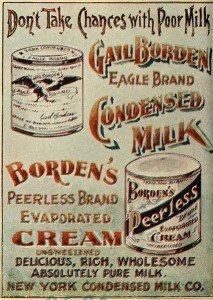 There is a mansion on a large bluff overlooking the Wallkill River Valley. It stands watch over what was once the Borden Farm, center of the Borden Condensed Milk empire. Sweeping views are forever tied to the mansion- from the Hamlet of Wallkill and farm fields, to the Lyon’s Dam on the Wallkill River and the Shawangunk Mountains. It was here that the daughter of John G. Borden, son of the founder of condensed milk, decided to make her home starting in 1900. Read more
There is a mansion on a large bluff overlooking the Wallkill River Valley. It stands watch over what was once the Borden Farm, center of the Borden Condensed Milk empire. Sweeping views are forever tied to the mansion- from the Hamlet of Wallkill and farm fields, to the Lyon’s Dam on the Wallkill River and the Shawangunk Mountains. It was here that the daughter of John G. Borden, son of the founder of condensed milk, decided to make her home starting in 1900. Read more
Culinary History
Unique Stoneware Jug Depicting Entertainment Acquired
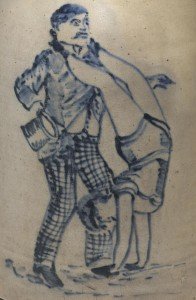 A four-gallon stoneware jug manufactured by Fulper Bros. in Flemington, New Jersey during the 1880s is now part of the New York State Museum’s Weitsman Collection of American Stoneware. Now on display at the State Museum, the historically significant piece of stoneware was recently acquired for the Museum by stoneware collector and benefactor, Adam Weitsman.
A four-gallon stoneware jug manufactured by Fulper Bros. in Flemington, New Jersey during the 1880s is now part of the New York State Museum’s Weitsman Collection of American Stoneware. Now on display at the State Museum, the historically significant piece of stoneware was recently acquired for the Museum by stoneware collector and benefactor, Adam Weitsman.
According to an announcement release to the press today, “The acrobat jug, a sought-after example of decorated American stoneware, has been breaking stoneware record prices at auction for decades and Weitsman had wanted the piece for over thirty years.” Weitsman recently purchased the jug from Allen Katz Americana the statement says. Read more
Albany Institute Event Featuring Hudson Valley Hops
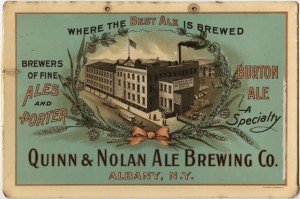 The Albany Institute of History &- Art will be hosting its second event featuring Hudson Valley Hops on Saturday, April 20, 2013 from 4-7pm.
The Albany Institute of History &- Art will be hosting its second event featuring Hudson Valley Hops on Saturday, April 20, 2013 from 4-7pm.
The event will be a celebration of the history of brewing in Albany and today’s craft beer industry in and around the Hudson Valley. Guests can sample the finest local craft beers, engage with experts in the field, enjoy an assortment of food and tour the museum galleries. Read more
Hallie Bond: Adirondack Brewing Traditions
 A new era of alcoholic beverage production is dawning in the Adirondacks. You can drink locally-brewed beer from any one of several micro-breweries, or imbibe vodka distilled from potatoes grown in Gabriels and filtered through the high-quality quartz crystals known as Herkimer diamonds. “Drinking local” has a long tradition within the Blue Line. Today, let’s consider the honorable history of Adirondack beer. Read more
A new era of alcoholic beverage production is dawning in the Adirondacks. You can drink locally-brewed beer from any one of several micro-breweries, or imbibe vodka distilled from potatoes grown in Gabriels and filtered through the high-quality quartz crystals known as Herkimer diamonds. “Drinking local” has a long tradition within the Blue Line. Today, let’s consider the honorable history of Adirondack beer. Read more
Ticonderga Scoundrel: Bernard Champagne
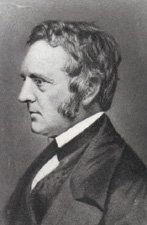 Fort Ticonderoga’s connection to the world of chocolate has been well documented over the years. Several additions and improvements were funded by Forrest Mars, Jr., husband of Deborah Adair Clark of Ticonderoga (they are now divorced). Forrest is worth approximately $10 billion as one of the heirs of the Mars candy company.
Fort Ticonderoga’s connection to the world of chocolate has been well documented over the years. Several additions and improvements were funded by Forrest Mars, Jr., husband of Deborah Adair Clark of Ticonderoga (they are now divorced). Forrest is worth approximately $10 billion as one of the heirs of the Mars candy company.
Eighty years ago, another famous name in chocolate—Baker—was bandied about in Ticonderoga, and it again involved mention of great wealth ($80 million at the time, equal to $1 billion in 2013). But for the village, the story left in its wake an embarrassment as bitter as the company’s most famous product (Baker’s bittersweet chocolate). Read more
Harlem Blues: Last Party At The Lenox Lounge
 On New Year’s Eve the cigar smoke was thick on the sidewalk in front of the famed jazz club, the Lenox Lounge. Men in tuxes and women in clingy gowns stepped out of white stretch limos, three deep on Malcolm X Avenue, a.k.a Lenox Avenue in Harlem, as blue notes popped from the chromed doorway.
On New Year’s Eve the cigar smoke was thick on the sidewalk in front of the famed jazz club, the Lenox Lounge. Men in tuxes and women in clingy gowns stepped out of white stretch limos, three deep on Malcolm X Avenue, a.k.a Lenox Avenue in Harlem, as blue notes popped from the chromed doorway.
A huge bejeweled crowd could be glimpsed dancing and drinking through the wide octogon window. Read more
Documentary Shooting At Saranac Laboratory Museum
 While George Washington Carver would become known as “the peanut man,” because of his extensive research into the practical uses and agricultural advantages of peanuts, Carver’s life work and legacy went far beyond the peanut in his search for ways to “help the man farthest down,” as he put it.
While George Washington Carver would become known as “the peanut man,” because of his extensive research into the practical uses and agricultural advantages of peanuts, Carver’s life work and legacy went far beyond the peanut in his search for ways to “help the man farthest down,” as he put it.
His early years were fraught with struggle and rejection, beginning with his birth to a slave mother near the end of the Civil War. He witnessed mob lynchings, was denied admission at a white college, and yet became a well-educated scientist and teacher of national and worldwide influence and renown.
Signature Communications of Huntingtown, MD, has been engaged by the National Park Service to produce a centerpiece video for visitors to the George Washington Carver National Memorial, located at Carver’s birthplace in Diamond, MO. Titled “Struggle and Triumph: The Legacy of George Washington Carver,” this 25 minute film will be accompanied by an educational video and supplemental educational package tied to national Common Core curriculum standards.
As part of the filming process, and to augment the archival images and film available, Signature is bringing Carver’s experience and legacy to life through re-enactments of seminal experiences in his life, filmed in authentic period settings. Childhood scenes have already been filmed with actors at historic villages and farms in Missouri, as well as at Carver’s birthplace in Diamond, MO. Because the lion’s share of Carver’s lifetime of achievement occurred at Tuskegee University, the filmmakers want to reinforce the significance of his laboratory research and teaching there. Unfortunately, none of the interior settings where Carver worked at Tuskegee have been retained in their historical condition. After a wide search, Signature decided on the Saranac Laboratory Museum at Historic Saranac Lake, and will be undertaking location filming there on November 14.
Dating from 1894 – near the time when George Washington Carver was preparing to move from the Midwest to Tuskegee – the Saranac Laboratory’s white glazed brick walls, wooden cabinetry and period-accurate hood cabinet are very much of the same historical style as those of Carver’s later labs at Tuskegee. Period photographs reinforce that similarity. To round out the illusion, the filmmakers will be outfitting a professional actor with period attire to represent Carver, and are also seeking several young college age men and women to appear as supporting actors representing Carver’s African American students at Tuskegee. Acting experience is not required for these non-speaking roles, and Signature Communications will supply appropriate wardrobe as well as $100 stipend and a credit in the film. Contact: John Allen, 410-535-3477, [email protected].
Photo Caption: George Washington Carver teaching in his Tuskegee University Laboratory, c.1905. Library of Congress photo archive.
Program On Adirondack Bread, Beer Saturday
![]() Adirondack Museum Curator Hallie Bond will present a program on the history of food in the Adirondacks, particularly the connection between bread and beer. The program, called “Traditions in Bread and Beer: Lives of Adirondackers Before Modernization,” will involve discussion and displays- participants will be able to sample both ingredients and final products.
Adirondack Museum Curator Hallie Bond will present a program on the history of food in the Adirondacks, particularly the connection between bread and beer. The program, called “Traditions in Bread and Beer: Lives of Adirondackers Before Modernization,” will involve discussion and displays- participants will be able to sample both ingredients and final products.
Bond is co-writing a book about traditional food of the Adirondacks and has discovered connections between bread and beer- the two were complementary tasks for early Adirondackers. Her presentation will address how they were made before World War II and how transportation networks, particularly railroads, were established.
Bond has been a curator at the Adirondack Museum since 1987. She has curated a number of popular exhibits including “Common Threads: 150 Years of Adirondack Quilts and Comforters,” “A Paradise for Boys and Girls: Children’s Camps in the Adirondacks,” and “Boats and Boating in the Adirondacks.” She has written extensively about regional history and material culture.
The program will be held from 3 to 5 pm on November 10 at the Adirondack Interpretive Center (AIC) in Newcomb. The AIC is a branch of the SUNY College of Environmental Science and Forestry’s Northern Forest Institute. For more information contact the AIC at 518-582-2200 ext. 11 or by email at [email protected].
CFP: Sugar and Beyond Conference Planned
The John Carter Brown Library seeks proposals for a conference entitled “Sugar and Beyond,” to be held on October 25-26, 2013, and in conjunction with the Library’s Fall 2013 exhibition on sugar in the early modern period, especially its bibliographical and visual legacies. The centrality of sugar to the development of the Atlantic world is now well known.
Sugar was the ‘green gold’ that planters across the Americas staked their fortunes on, and it was the commodity that became linked in bittersweet fashion to the rise of the Atlantic slave trade. Producing unprecedented quantities of sugar through their enforced labor, Africans on plantations helped transform life not only in the colonies but also in Europe, where consumers incorporated the luxury commodity into their everyday rituals and routines.
“Sugar and Beyond” seeks to evaluate the current state of scholarship on sugar, as well as to move beyond it by considering related or alternative consumer cultures and economies. Given its importance, sugar as a topic still pervades scholarship on the Americas and has been treated in many recent works about the Caribbean, Brazil, and other regions. This conference thus aims to serve as an occasion where new directions in the study of sugar can be assessed.
At the same time, the connection of sugar to such broader topics as the plantation system, slavery and abolition, consumption and production, food, commodity exchange, natural history, and ecology has pointed the way to related but distinct areas of inquiry. Although sugar was one of the most profitable crops of the tropical Americas, it was not the only plant being cultivated.
Furthermore, although the plantation system dominated the lives of African and other enslaved peoples, they focused much of their efforts at resistance around the search for ways to mitigate or escape the regime of sugar planting. The organizers thus welcome scholars from all disciplines and national traditions interested in exploring both the power and limits of sugar in the early Atlantic world.
Topics that papers might consider include but are not limited to the following:
–The development of sugar in comparative context
–The rise of sugar and new conceptions of aesthetics, taste, and cultural refinement
–Atlantic cultures of consumption
–Coffee, cacao, and other non-sugar crops and commodities
–Natural history and related genres of colonial description and promotion
–Imperial botany and scientific programs of agricultural expansion and experimentation
–Alternative ecologies to the sugar plantation
–Plant transfer and cultivation by indigenous and African agents
–Provision grounds and informal marketing
–Economies of subsistence, survival, and resistance
–Reimagining the Caribbean archive beyond sugar: new texts and methodological approaches
In order to be considered for the program, send a paper proposal of 500 words and CV to [email protected]. The deadline for submitting proposals is December 15, 2012.
The conference organizers include Christopher P. Iannini (Rutgers), Julie Chun Kim (Fordham), K. Dian Kriz (Brown).
Photo: Havemeyers & Elder’s, later Domino, sugar refinery in New York City in the 1880s. Photo courtesy wgpa.org.
AJ Schenkman: The Hasbrouck Ledger
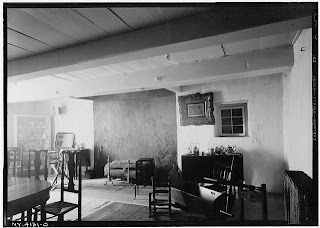 One of the problems in researching the life of Colonel Jonathan Hasbrouck is that there are so few primary sources written by him left to us. We are fortunate that at least one of the treasures that give us a peek into his life, one of his account ledgers, has been preserved. It is a rich source for a researcher of not only Hasbrouck, but of others from his time period as well.
One of the problems in researching the life of Colonel Jonathan Hasbrouck is that there are so few primary sources written by him left to us. We are fortunate that at least one of the treasures that give us a peek into his life, one of his account ledgers, has been preserved. It is a rich source for a researcher of not only Hasbrouck, but of others from his time period as well.
Colonel Jonathan Hasbrouck was born in 1722 in Ulster County just outside of New Paltz, New York. He later relocated in 1749 to what would become Newburgh, where his mother Elsie Schoonmaker purchased 99 acres of land.
Read more
